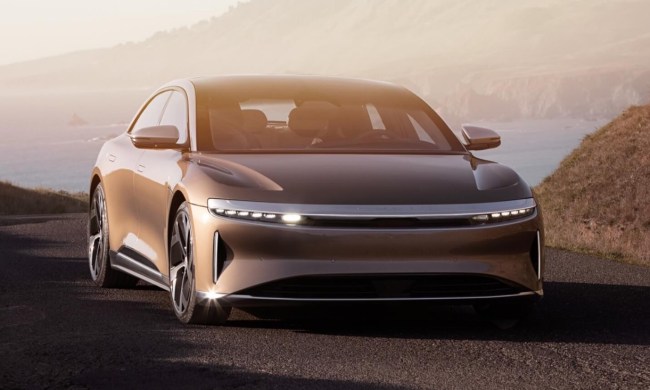The Los Angeles Fire Department (LAFD) is set to become the first one in North America to deploy an electric fire truck.
The LAFD recently confirmed it has placed an order for the truck with Austrian firm Rosenbauer and expects to take delivery of it in 2021.
The incoming vehicle (below), which meets all of the standards of the National Fire Protection Association, uses two batteries with a charge capacity of 100-kilowatt hours. This should allow for fully electric operation for around two hours, with an on-board diesel generator able to recharge the batteries on location, if necessary, in just 15 minutes.
Besides its green credentials, the fire truck also features a compact design and a modular interior so firefighters can install their gear pretty much any way they like.
It also has a tight turning radius and, according to LAFD chief Ralph Terrazas, faster acceleration than its current vehicles. Terrazas said he’s already taken the truck for a test drive that included “doing donuts in the parking lot at Dodger Stadium.”
LAFD’s fire chief said he felt excited that his fire department is “the first in North America to order this cutting-edge fire engine.”
He added: “The electric fire engine is an innovative tool that will help reduce noise and harmful diesel emissions while providing a flexible tool for firefighting and rescue operations from a technologically advanced platform. We are looking forward to evaluating it in a real-world environment once it hits the streets of Hollywood next year.”

Rosenbauer CEO Dieter Siegel described the new truck as “multi-functional [and] fully connected,” with a “flexible interior [that] can be used as a fully-featured command center.” He described LAFD’s interest in the vehicle as “a fantastic vote of confidence” for the design.
The electric truck will be stationed at Fire Station 82 in Hollywood, with Terrazas describing it as “a good fit” because of the brush threat and narrow roads that are often congested. The LAFD plans to equip the station with rapid-charging technology to ensure that the vehicle is always ready to respond to emergency calls.
Rosenbauer has been making fire-service equipment since 1866 and is one of the top makers of fire trucks globally. The company estimates that up to 400 electric fire trucks could be in service with fire departments across North America by 2025


